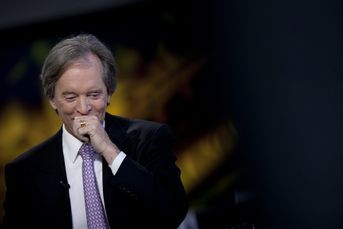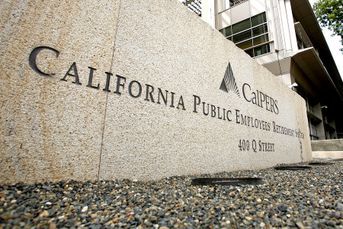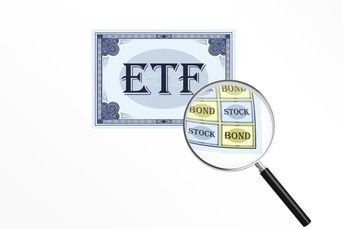Money manager tax-exempt assets dip after two-year rebound
U.S. institutional tax-exempt assets of the 500 largest money managers declined 5.3% last year, the first slip after…
U.S. institutional tax-exempt assets of the 500 largest money managers declined 5.3% last year, the first slip after two years of rebounds from the global financial crisis, sister publication Pensions & Investments' latest annual money manager survey shows.
Assets under management for the group totaled $10.83 trillion as of Dec. 31, down from $11.42 trillion at year-end 2010.
AUM had grown 11.2% in 2010, off a half-percentage point from the previous year. The pre-crisis asset high at the end of 2007 appears far from reach.
Exacerbating overall asset declines last year was that international equity markets did poorly at the same time that money was flowing into the asset class, said Kevin Quirk, a partner at money manager consultant Casey Quirk & Associates LLC.
The Morgan Stanley Capital International All Country World Index returned -7.35% for the year, and the MSCI Europe, Australasia and Far East Index returned -11.3%. That compares with the domestic Russell 3000 benchmark, up 1.03%.
On the fixed-income side, the Barclays Capital Aggregate Bond Index was up 7.84%, and the Barclays Capital Global Aggregate Total Return Index was up 5.64%.
But an even more powerful reason for the drop was a confluence of events that led to the maturing of the institutional money management industry, Mr. Quirk said.
An increase in frozen pension plans among U.S. corporations meant shrinking investment capital among the group, while the poor economy left foundations and endowments with lower contributions, he said.
“You don't have that big net-flow tail wind happening anymore,” Mr. Quirk said.
The largest managers of U.S. institutional tax-exempt assets in P&I's survey — BlackRock Inc. and State Street Global Advisors — were down from their year-earlier totals.
BlackRock's $831.74 billion declined 10.5% last year, while SSgA's total $694.51 billion fell more than 18%.
The biggest decline among the leaders, however, was suffered by Legg Mason Inc., where assets fell 41.4% to $203.48 billion last year. The drop knocked Legg Mason into 11th place.
BIGGEST JUMP
Mary Athridge, a spokeswoman for Legg Mason, said in a statement that $102 billion of the asset drop was due to legacy money market assets being classified as taxable.
Excluding the reclassified assets, Legg Mason's assets dropped 12.1%.
The most substantial gain among the top 10 came from Prudential Financial Inc., which reported U.S. institutional tax-exempt assets of $330.72 billion last year, up 14% from 2010.
Other sizable increases among the top 10 were at Pacific Investment Management Co. LLC and J.P. Morgan Asset Management, each with a 7.7% gain.
Pimco had U.S. institutional tax-exempt assets of $396.05 billion at year-end, placing it seventh, while J.P. Morgan saw its assets rise to $212.3 billion, moving up to 10th, from 12th a year earlier.
Many money management company officials, including Ms. Athridge and Edwin Conway, head of BlackRock's U.S. and Canada institutional group, said that outflows came from active domestic equity.
Indeed, active domestic equity assets reported by the 687 managers responding to this year's survey were down nearly 10% to $1.61 trillion. The average asset mix of the top 500 managers shows stocks (domestic and international, active and passive) dropping to 44.7%, from 46.1%.
Institutional clients last year sat on high levels of cash because of concerns about the effect of the European crisis on market volatility, Mr. Conway said.
There was a shift among institutional investors from active income strategies to passive ones as in-vestors sought “efficient beta,” with the yield on 10-year Treasury notes down to 1% to 2%, he said.
“Paying active-management fees erodes the ability to really get value,” Mr. Conway said.
Institutional investors are asking themselves: “"When it comes to paying those fees in today's [low-rate] environment, is it worth that?'” he said.
Investors are re-examining their fixed-income portfolios and, in many cases, moving to multiasset portfolios that combine passive fixed income, bank loans, emerging-markets debt and high yield, Mr. Conway said.
Investors also are looking at various strategies involving the use of alternatives, he said.
INDEXED-BOND STRATEGIES
Fixed-income-index strategies represented 35%, or $479.1 billion, of BlackRock's institutional index assets under management at the end of last year, according to its 10-K.
Among managers reporting their asset breakouts to P&I, however, indexed-bond strategies lost nearly 20%, at $440.83 billion. Overall, indexed strategies dropped nearly 10%.
SSgA remained in second place in P&I's survey, even with its more than 18% drop in assets under management.
The company would have shown a $19 billion gain if not for two events, said Scott Powers, SSgA's president and chief executive.
First, SSgA had been managing a portfolio of mortgage-backed securities for the Treasury Department, a program that started winding down last year.
Mr. Powers said that $125 billion in Treasury funds were removed from SSgA's total last year.
Second, SSgA reduced the amount of collateral backing a securities lending pool by $50 billion last year as it reduced risk in the program, he said.
The eurozone crisis put the brakes on institutional investing in the second half last year, Mr. Powers said.
“The disruption in the third and fourth quarter of last year was triggered by the European sovereign-debt crisis,” he said. “It created a risk-averse or risk-off trade, and client money flowed into safe harbors.”
That hurt flows overall, Mr. Powers said.
“People, in taking risk off the table, either stopped putting money to work in more traditional mandates like stocks and bonds, or took money out of the riskier securities and put them into cash or government-guaranteed funds,” he said.
But Prudential Investment Management chief executive and president David Hunt said that the riskier investment environment actually has helped his firm.
“As pension plans have moved to take risk off their balance sheets, we have actually — on a relative basis — benefited from that,” he said.
Prudential has experience in the long-duration, fixed-income and liability-driven investing strategies increasingly being sought by executives at corporate pension plans, Mr. Hunt said.
Prudential's multimanager model allows the investment teams in six separate investment subsidiaries to develop “a razor-sharp focus” on specific asset classes and focus on investment performance, something that is more difficult to do at large integrated managers, he said.
NONCORE GROWTH
Officials at Pimco said their firm's growth came in asset allocation and absolute-return strategies, as well as traditional fixed income.
“Nearly 85% of the new assets were in noncore strategies, as investors worked with us on broader investment solutions,” said Thomas Otterbein, a Pimco managing director and head of its client-facing group in the Americas. “In the traditional fixed-income sectors, we saw a continued interest in credit strategies and cash mandates as clients pursued higher-yielding alternatives to enhance portfolio returns.”
At BNY Mellon Asset Management, diversification among the manager's 16 different boutiques helped assets grow in a difficult environment, said Curtis Arledge, vice chairman of The Bank of New York Mellon Corp. and chief executive of investment management.
“Part of the story is equity versus fixed income,” he said.
“Fixed-income-heavy managers on our platform have benefited from the movement of capital in that direction.”
There were strong institutional inflows in international equities last year, particularly in emerging markets, even as stock prices went down, Mr. Arledge said.
BNY Mellon reported $381.36 billion in U.S. institutional tax-exempt assets last year, ranking eighth overall. Assets were down 3.4% from 2010.
Market volatility, a key theme last year, will continue indefinitely because the eurozone crisis shows no signs of resolving anytime soon, said Stephen Potter, president of Northern Trust Global Investments.
“I don't expect in another six to 12 months, after the U.S. election, [to be] saying, "OK, the coast is clear,'” he said.
Although that volatility limited top-line growth at Northern Trust Global Investments, Mr. Potter said that a 38% jump in the money manager's DC business, to $65 billion at year-end 2011, helped the firm.
“Our new-business wins, particularly in DC, more than offset the declines we experienced due to market volatility and minimal lost business,” he said.
Northern Trust's U.S. institutional tax-exempt assets grew just 0.7% last year, to $460 billion.
A slippage in assets under management might become the industry norm in coming years as the industry continues to mature, Mr. Quirk said.
The days when all managers are winners is over, he said.
The markets carried most managers for three decades, except for a brief period during the Internet bubble, Mr. Quirk said.
The recent financial crisis changed the game, as positive returns no longer were guaranteed, he said.
“Maybe for the first time ever, this is becoming a real take-away game,” Mr. Quirk said. “This is suddenly becoming a very competitive industry where there are winners and losers.”
Among other major shifts in survey categories:
• Overlay managers reported significant increases last year, with $397.3 billion in U.S. institutional tax-exempt assets as of Dec. 31, up 57.5% from $252.3 billion in 2010.
The top overlay manager by far, AllianceBernstein LP, reported an increase of 89.2% to $96.72 billion. It reported $68.7 billion allocated to currency, up from $48.5 billion in 2010, and a first-time position of $26.6 billion in global tactical asset allocation.
Neil Maroney, senior financial analyst at AllianceBernstein, didn't return phone calls seeking comment.
Randy Diamond is a reporter for sister publication Pensions & Investments.
Learn more about reprints and licensing for this article.






